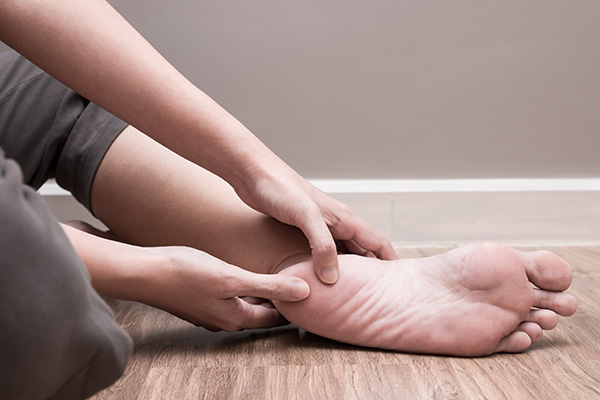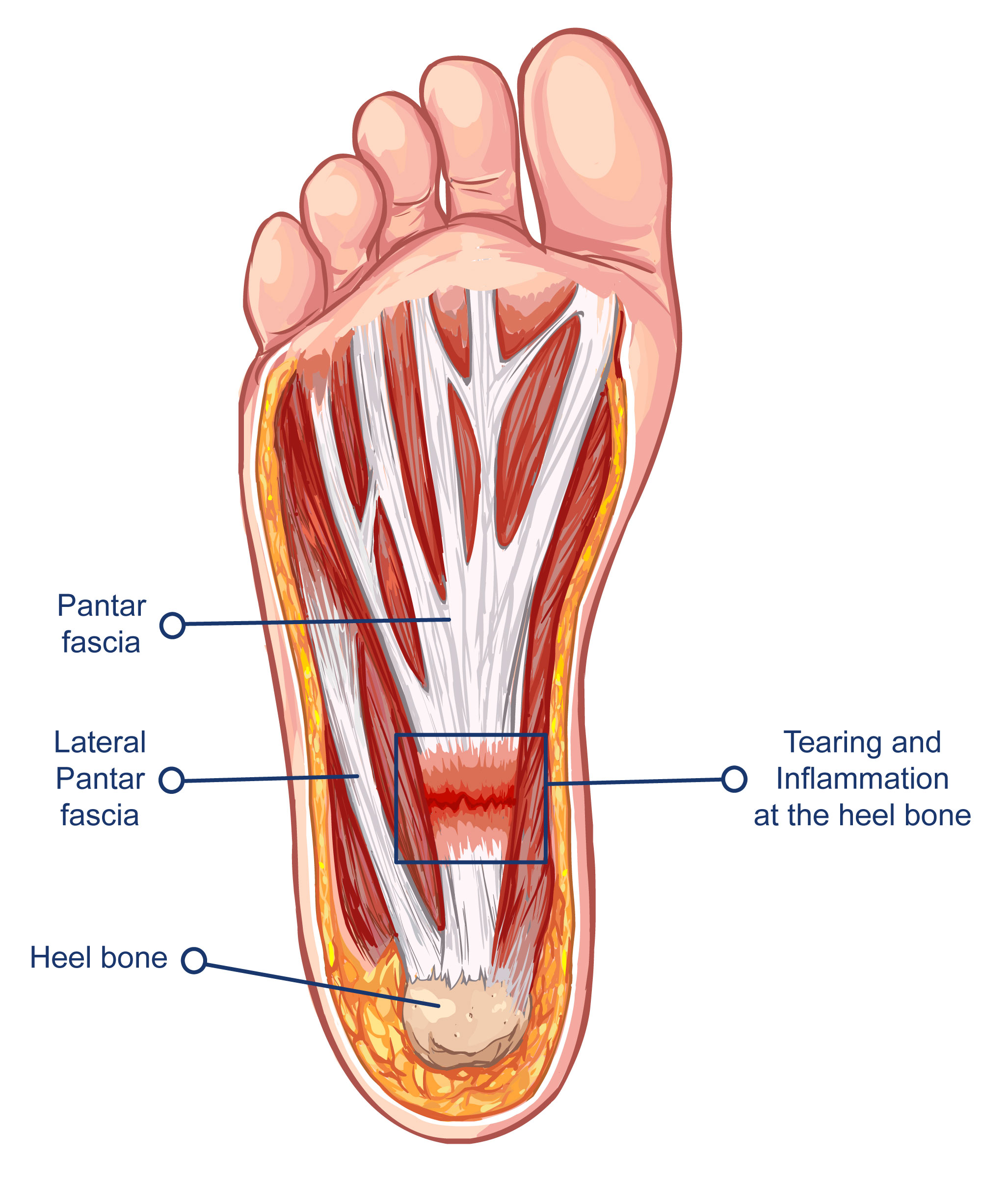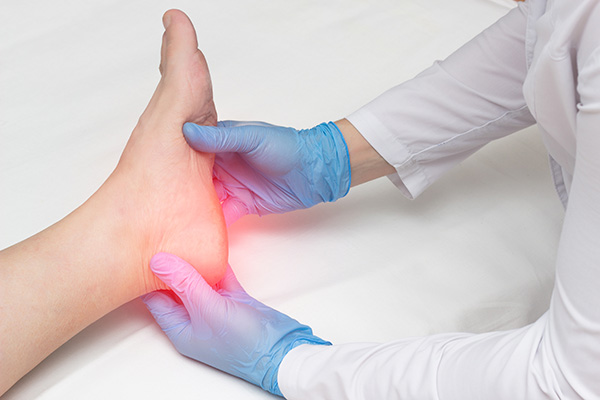Plantar Fasciitis
Plantar Fasciitis
Plantar fasciitis is described as a sharp, stabbing pain on the bottom of your foot, which is usually felt first thing in the morning as you take your first steps from the bed. This degenerative condition is due to irritation of your plantar fascia, or the thickened tissue supporting the arch of your foot, which acts as a shock absorber.
As many as 1 million people seek treatment for plantar fasciitis every year and at least 83% of these people are active working adults, both young and old. Plantar fasciitis is a common orthopedic condition in the United States and is also prevalent in the running community.
What Is Plantar Fasciitis?
Although plantar fasciitis’ name suggests that it is an inflammatory condition of the plantar fascia, the tissue is absent of inflammatory cells. Plantar fasciitis is a degenerative irritation of the plantar fascia.
Your foot is made up of three bony segments and your fascia is a thick tendinous tissue that runs from your heel bone into the ball of your foot. The plantar fascia provides support for your arch and absorbs shock and energy like a spring. It allows your foot to move efficiently when you take a step while walking or running.
A strong, flexible, and springy plantar fascia is needed for normal movement. Due to chronic micro tears of the fascia from repetitive stress, the thickened and degenerative tissue creates stiffness in your foot causing you to walk abnormally. Chronic degeneration of the plantar fascia will cause you to avoid moving your feet and add to your immobility and pain.
This vicious cycle continues until you seek treatment for your limiting pain.

Symptoms Of Plantar Fasciitis
There are characteristic signs and symptoms that you will experience if you have plantar fasciitis:
- Sharp, localized heel pain
- Pain is worse with the first steps in the morning
- Pain is worse after prolonged sitting
- Pain improves with light activity
- Pain worsens with strenuous activity
- Tender to touch on the bottom of your heel bone
- Pain increases when you stretch your foot and toes up
- Tightness across your calf muscles
- Heel spurs are located on the button of your heel bone
Heel spurs can be found in about 50% of people with plantar fasciitis. Heel spurs are often the result of plantar fasciitis due to increased tension across the tendon where it inserts into the heel bone. As often with bone spurs, they are not the cause of pain but can show you where added stress has been placed on your bones for an extended period of time.

Causes Of Plantar Fasciitis
Plantar fasciitis is primarily caused by degenerative changes and is considered an overuse injury. As a result, you want to stay off your foot, but over time, this lack of use will shorten and weaken your lower leg muscles.
There are many reasons why you can develop this debilitating condition, but the main culprit is overuse and increased stress on your tissues during weight-bearing activities. The repetitive stress that you place on your feet during standing, walking, and running activities creates microtears of your plantar fascia.
These micro-tears heal and develop into scar tissue which limits your foot’s ability to remain flexible. And if you do not properly rehabilitate your foot after this type of injury, you will continue to lose more flexibility and build up more scar tissue. The thickened tissue also reduces blood flow into your foot and slows its ability to heal properly.
Ultrasounds show calcification and thickening of your plantar fascia, which limits the ability of your arteries and veins to do their job. Blood supply is restricted and the normal inflammatory response your foot should go through during injury is interrupted. So, you don’t get a chance to completely heal from your injury.
As a result, you’ll develop more foot pain, and change the way you walk which will lead to additional orthopedic issues such as:
- Heel pad atrophy
- Tight calf muscles
- Knee pain
- Hip pain
- Back pain
- Neuropathy
- Tendon rupture
- Muscles tear
Some people are at a higher risk for developing plantar fasciitis. Predisposing factors include:
- Flat feet, or pes planus
- High arches, or pes cavus
- Excessive foot motion, or too much foot pronation or supination
- Limited ankle range of motion, or not enough ankle flexion or extension
Also, consider that any spinal, pelvic, hip, or knee dysfunctions can change the way you walk and create added stress to your feet.

Treatment Options For Plantar Fasciitis
If you have already tried rest and worn a walking boot for at least six weeks, you might have already been told you need surgery to fix your plantar fasciitis. Don’t despair! You can find several conservative and hands-on treatment options with Dr. Fierro to address your foot pain.
The quickest way to treat your plantar fasciitis is shockwave therapy, which is also known as Extracorporeal Pulse Activation Technology (EPAT) or Extracorporeal Shock Wave Technology (ESWT). This therapy uses high-energy acoustic pressure waves to treat plantar fasciitis and reduce scar tissue by:
- Stimulating metabolism
- Enhancing circulation
- Activating tissue healing
Other treatment options to consider or add to your program include:
- Kinesio taping
- Active Release Technique (ART)
- Massage therapy
- Acupuncture
- Dry Needling
- Laser therapy

Our Process For Treating Plantar Fasciitis
You can expect a thorough examination and compassionate care during your first office visit with Dr. Fierro. Come in and be prepared to tell Dr. Fierro all about your pain and how it is affecting your life. He will determine the best course of action for you and help you create a treatment plan specifically designed to get back on your feet and move pain-free.
Dr. Fierro can order diagnostic tests, or you can bring the results with you into his office if you already have them so he can help you understand what it all means. Diagnostic ultrasounds, x-rays, or MRIs can help rule in or rule out potential problems including neuropathy, or nerve pain, to determine where your pain is truly coming from. Other possibilities causing your pain include:
- Fat pad contusion
- Stress fractures
- Infection
- Tendonitis
- Osteoporosis
- Cancer
Then, Dr. Fierro will examine your foot and lower leg by completing a series of special tests that include:
- Reflexes
- Sensation
- Strength
- Range of motion
- Muscle pain
- Joint pain
- Swelling
Schedule a second appointment to review your results and develop a care plan. You will be provided with several options for treatment and make the decision on how often you can come for visits.

